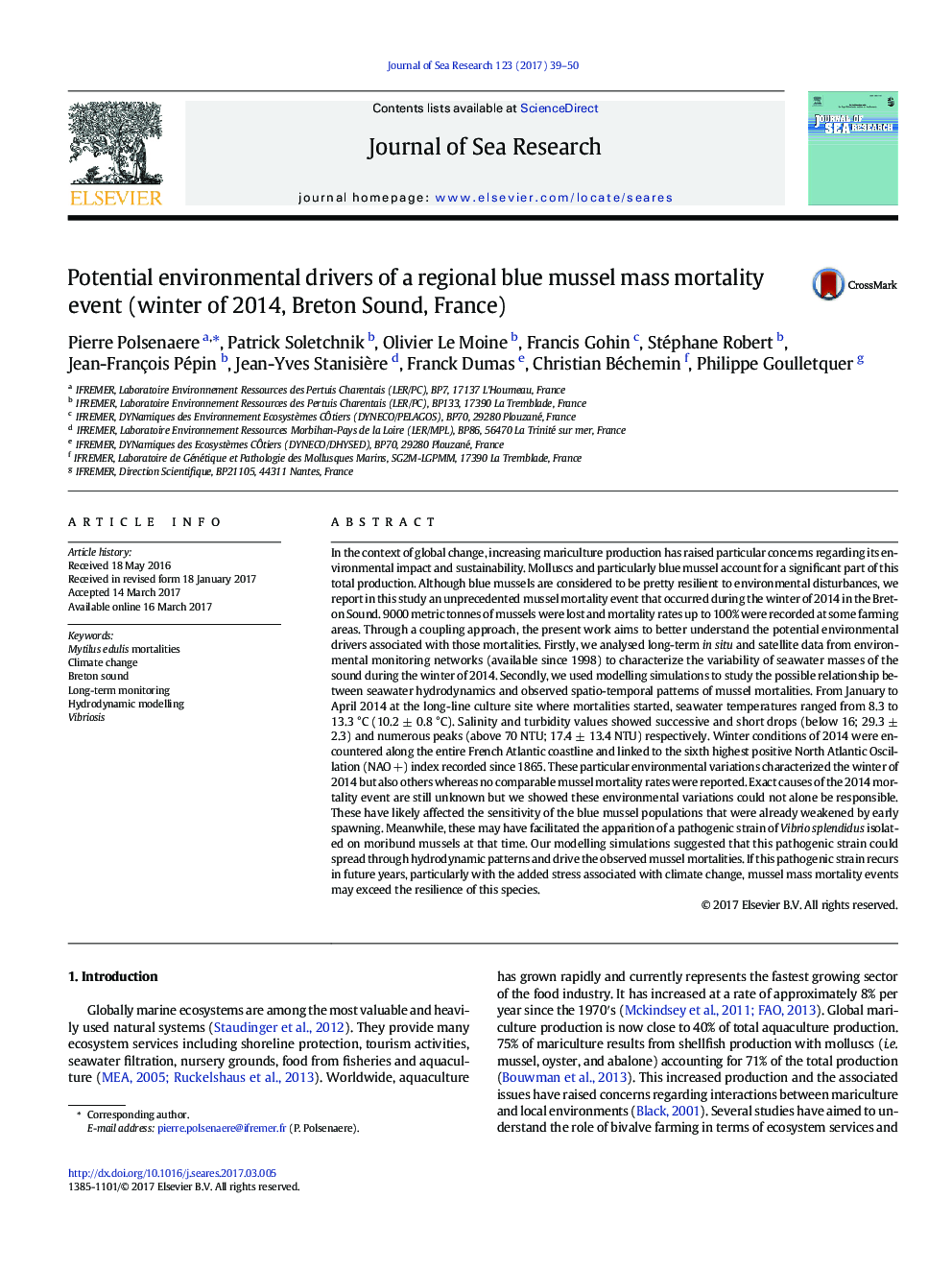| کد مقاله | کد نشریه | سال انتشار | مقاله انگلیسی | نسخه تمام متن |
|---|---|---|---|---|
| 5766071 | 1627452 | 2017 | 12 صفحه PDF | دانلود رایگان |

- A significant French production area lost 9000Â t of blue mussels in the winter of 2014.
- We studied potential environmental drivers linked to those unprecedented mortalities.
- The winter of 2014 had the sixth highest NAOÂ + index since 1865.
- Such conditions characterized other winters without comparable mortalities in the area.
- Hydrodynamic connectivity participated to specific mortality vector diffusion.
In the context of global change, increasing mariculture production has raised particular concerns regarding its environmental impact and sustainability. Molluscs and particularly blue mussel account for a significant part of this total production. Although blue mussels are considered to be pretty resilient to environmental disturbances, we report in this study an unprecedented mussel mortality event that occurred during the winter of 2014 in the Breton Sound. 9000 metric tonnes of mussels were lost and mortality rates up to 100% were recorded at some farming areas. Through a coupling approach, the present work aims to better understand the potential environmental drivers associated with those mortalities. Firstly, we analysed long-term in situ and satellite data from environmental monitoring networks (available since 1998) to characterize the variability of seawater masses of the sound during the winter of 2014. Secondly, we used modelling simulations to study the possible relationship between seawater hydrodynamics and observed spatio-temporal patterns of mussel mortalities. From January to April 2014 at the long-line culture site where mortalities started, seawater temperatures ranged from 8.3 to 13.3 °C (10.2 ± 0.8 °C). Salinity and turbidity values showed successive and short drops (below 16; 29.3 ± 2.3) and numerous peaks (above 70 NTU; 17.4 ± 13.4 NTU) respectively. Winter conditions of 2014 were encountered along the entire French Atlantic coastline and linked to the sixth highest positive North Atlantic Oscillation (NAO +) index recorded since 1865. These particular environmental variations characterized the winter of 2014 but also others whereas no comparable mussel mortality rates were reported. Exact causes of the 2014 mortality event are still unknown but we showed these environmental variations could not alone be responsible. These have likely affected the sensitivity of the blue mussel populations that were already weakened by early spawning. Meanwhile, these may have facilitated the apparition of a pathogenic strain of Vibrio splendidus isolated on moribund mussels at that time. Our modelling simulations suggested that this pathogenic strain could spread through hydrodynamic patterns and drive the observed mussel mortalities. If this pathogenic strain recurs in future years, particularly with the added stress associated with climate change, mussel mass mortality events may exceed the resilience of this species.
Journal: Journal of Sea Research - Volume 123, May 2017, Pages 39-50